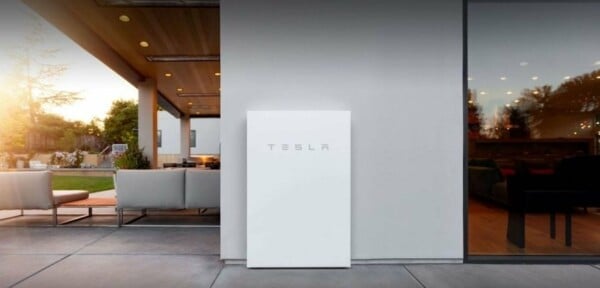Batteries. Could they be used to power our homes?.

The use of batteries in our society is an everyday occurrence, however, using them to power our homes may seem a strange thought. Yet, this is fast becoming a reality with companies like Tesla and Moixa producing their own domestic energy storage units – as pictured below.
The most common types of domestic energy storage batteries are lead acid and lithium-ion. Lead acid batteries are currently the most popular because they are the cheapest, but lithium-ion batteries will likely surpass them due to their higher energy density and gradual falling costs. Looking long term there are an array of emerging energy storage technologies such as flow batteries, metal air batteries, supercapacitors, flywheels, and hydrogen batteries. As many of these are currently used on an industrial scale, it is likely we will have different, even more effective types of domestic energy storage batteries in the future.
As the UK is shifting to a fully electric society batteries could prove a useful tool in making this happen by reducing stress on the electricity grid. Domestic batteries can be used to help manage grid supply and demand by charging up when demand is low and feeding electricity back when demand is high. As the grid’s energy supply has a higher carbon density at peak times, by charging up batteries at off-peak times, the electricity it supplies has much lower associated emissions. Households can be rewarded for doing this through time-of-use-tariffs which offer cheaper electricity at off-peak times and even give money back to customers for returning energy to the grid.
Domestic batteries are most effective when used in conjunction with solar PV as they can store excess electricity generation. With domestic energy demand patterns not always matching that of PV generation a battery can be used to store excess electricity when generation is high, but demand is not. This energy can then be used at times when demand is high, but generation is low, like night-time, ensuring no electricity is wasted. If there is surplus energy generation for the battery’s capacity, then households can again get money back for transferring this to the grid.
This improves homes energy security, allowing them to produce, store and use their own electricity with less reliance on the grid. An issue becoming increasingly important with rising energy bills and uncertain gas supplies.
Another interesting feature of domestic batteries is that they can power homes in an outage. However, due to the size of domestic batteries it is unlikely they can power everything, with essential and non-essential loads normally separated.
Domestic batteries can be used to charge up electric vehicles. But, because the capacity and power output of typical systems is below that of home charging points, they would take longer to charge cars. Meaning use in this instance is heavily dependent on consumer requirements.
The Tesla Powerwall 2 costs between £9,800 to £12,900, has a capacity of 13.5kWh and a peak power output of 5kW. This means they are not necessarily a cheap alternative to grid electricity. What they do provide is a solution to excess solar PV generation and increasing grid demand. With domestic battery prices dropping 60% in Germany following a sustained uptake in 2014-17 they certainly hold great potential for the future of green homes.
Despite this the government is yet to utilise energy storage systems in their domestic net zero strategy. One way they could do this is via community battery schemes. These work by splitting the costs and benefits of PV’s and larger centralised batteries between members of the local community. By sharing the system, the individual risk and cost drops, which would in turn encourage uptake. The government could further increase uptake by partially supporting local schemes through grants and loans. Not only would this reduce energy emissions, and create a community ‘microgrid’, improving their energy security, but it would also provide more energy storage units that could be used in grid demand management programmes.
To find out more about domestic energy storage batteries and the implications for housebuilders sign up to our next free technical webinar.
Photo credit to Moixa & Tesla.